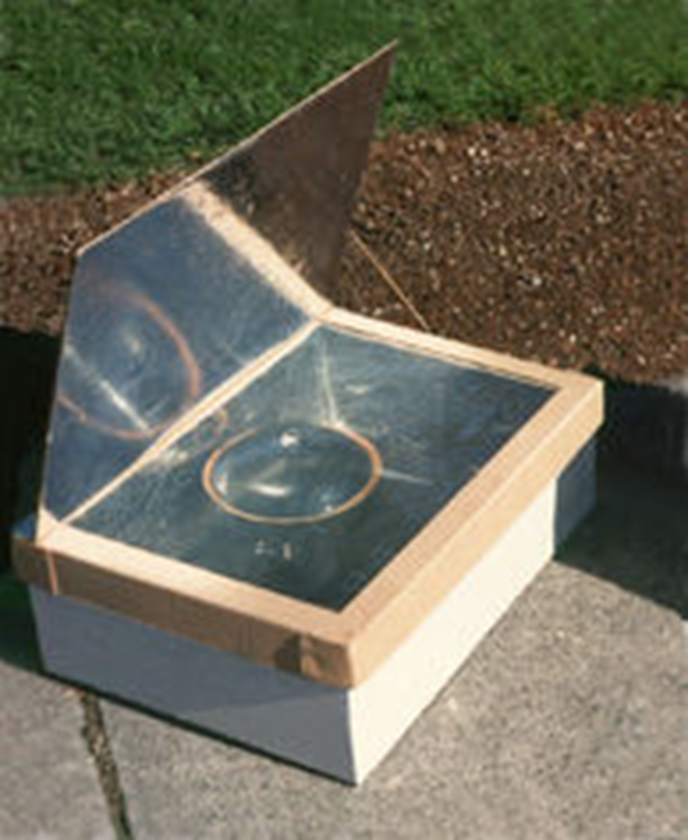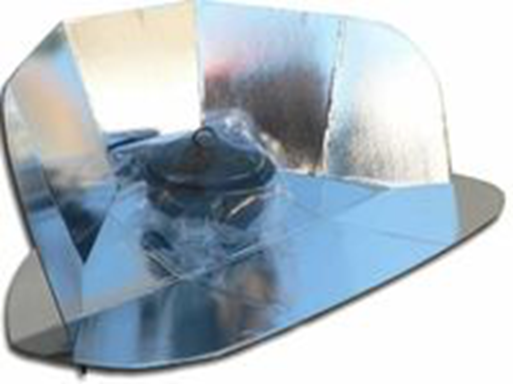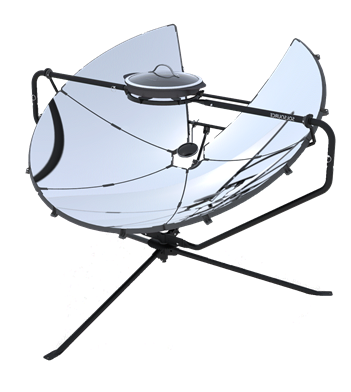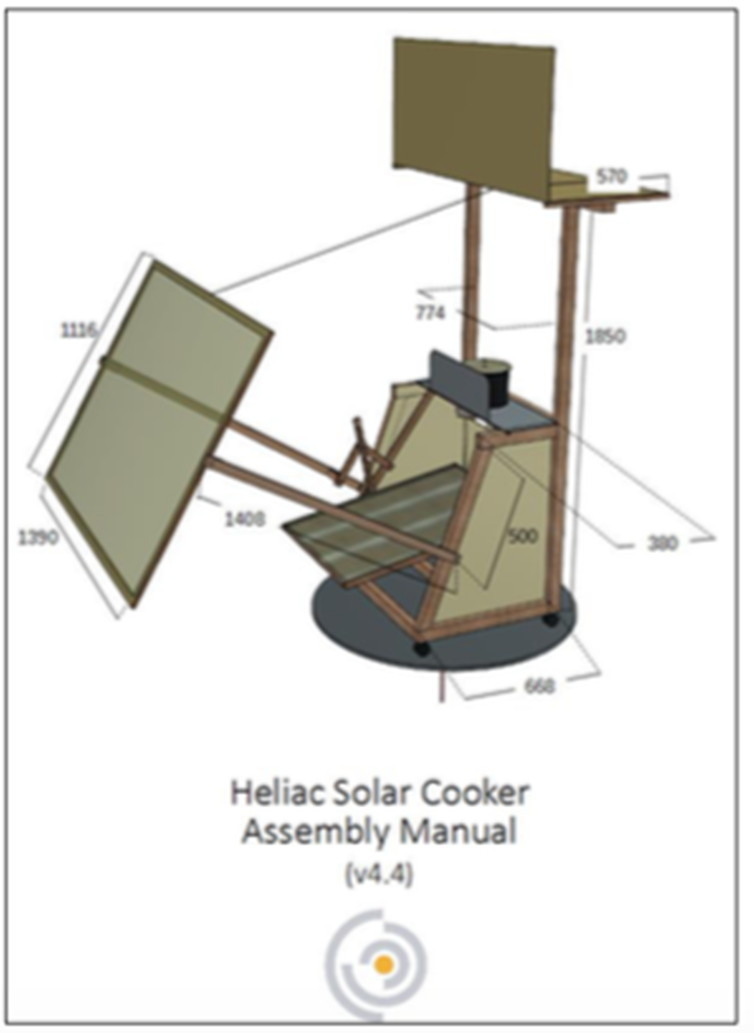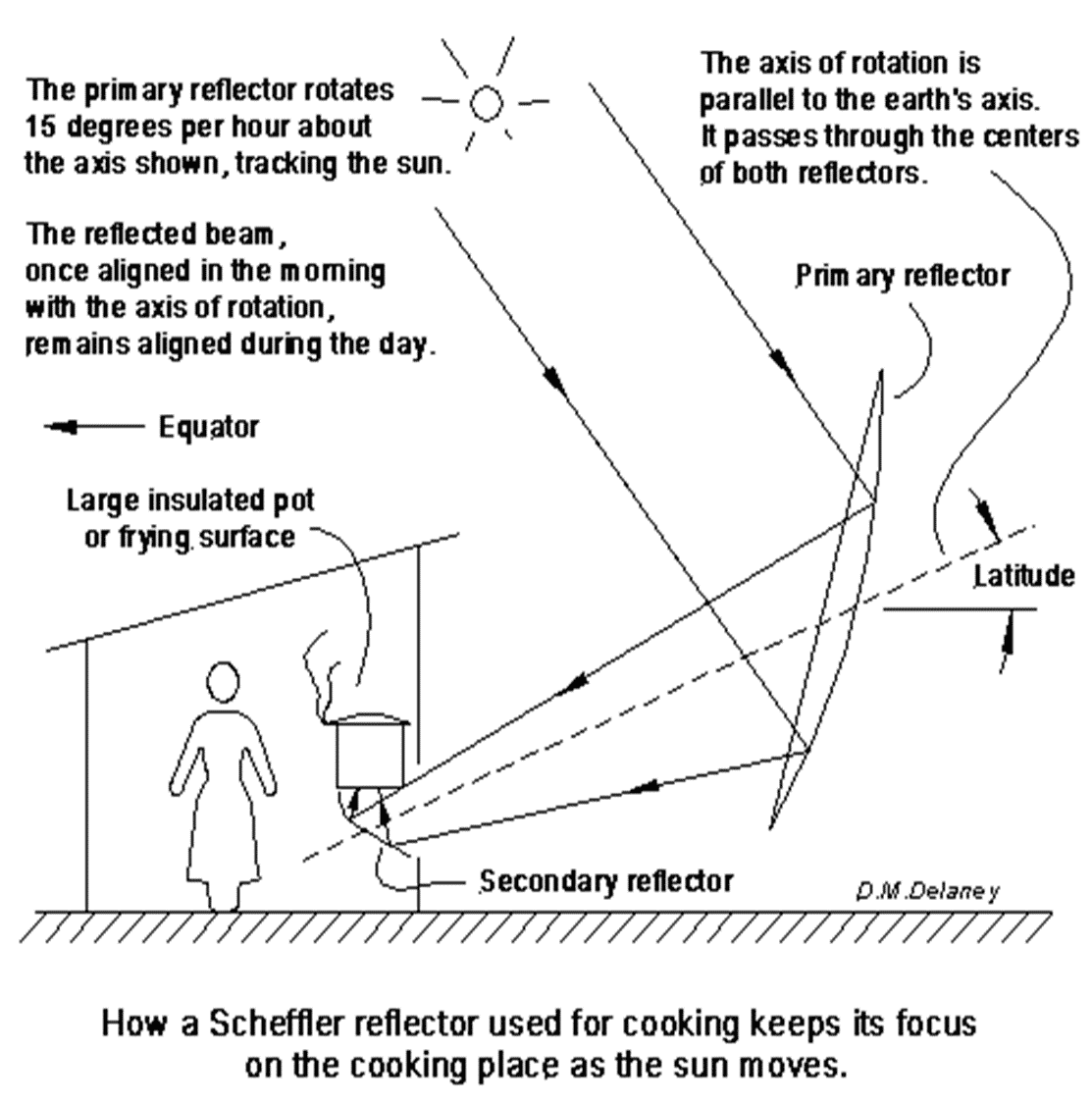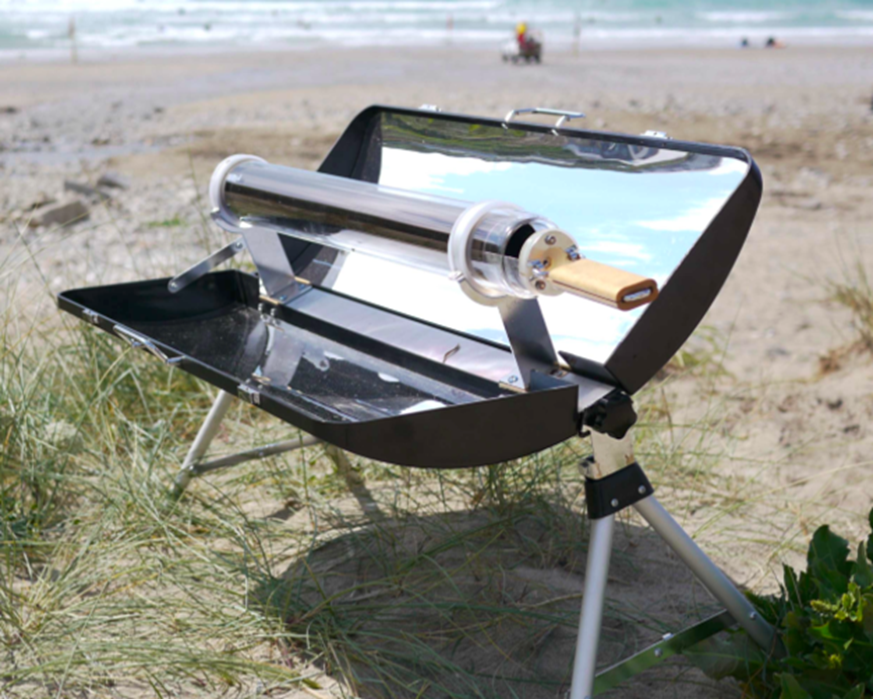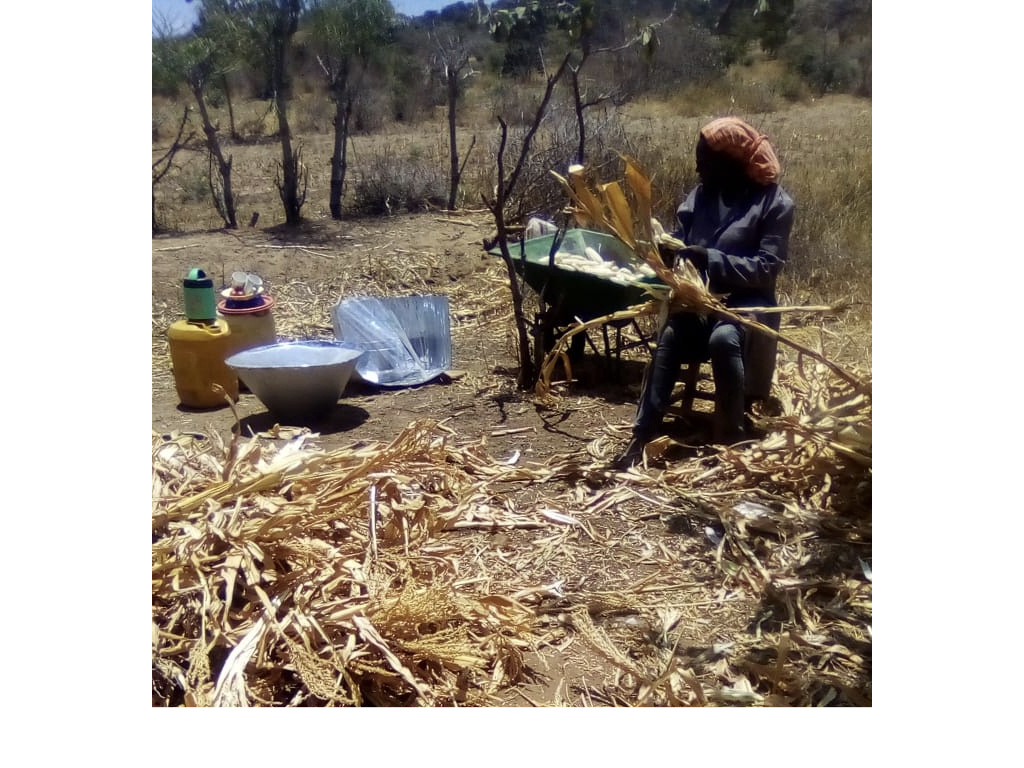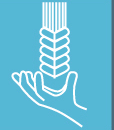Type of Cookers
There are different types of solar cookers. Complexity and prices vary a lot. The principles are explained below and if you want to learn more, have a look at the Wiki Page of Solar Cookers International.
Box ovens
This type of cooker has the advantage of slow, even cooking of large quantities of food. Variations include slanting the face toward the sun and the number of reflectors.
Advantages are; some are large enough to cook with multiple pots, also great for baking and slow cooking. They be constructed with simple materials, several high quality commercial designs also available.
Disadvantage is, the box design may block light entering the cooking chamber unless the unit is tipped and cannot fry foods. Cooking temperature range is 135 - 200 °C (275 - 392 °F).
The Conical Cooker
A conical solar cooker has a large cooking power and is relatively cheap. It consists of a piece of iron bent into a conical shape, which is covered at the inside by reflecting aluminum foil. Inside the conus there is a platform of blackened iron on which a blackened pan is placed. The sun rays reflect from the aluminum foil onto the pan and platform, which absorb the radiation and thus are heated.
Putting a transparent sleeve or plastic bag around the pan yields higher maximum temperatures and thus faster cooking. When using a conical cooker with a diameter of 80 cm, 1 liter of water can be brought to boiling in about 20 minutes, and when baking bread, temperatures in excess of 150 °C can be reached.
The vertically oriented version as shown works fine when the sun is high (70 - 90 degrees) above the horizon. The cooker was designed by Mr. Samuel Odhiambo of Asulma Centre, Nairobi, Kenya in collaboration with Mr. Henk Blok from the foundation Solar Cooking Kozon, The Netherlands.
Panel ovens
In this design, flat panels concentrate the sun's rays onto a pot inside a plastic bag or under a glass bowl. To produce a panel oven you need cardboard, aluminum foil and some glue. Guidelines can be foundhere.
Advantage: It is inexpensive to build or buy, and typically can be collapsed for storage or transport. Slow cooking retains flavors and nutrients, and requires little, if any, reorientation to the sun.
Disadvantage: It achieves usually not more than 110 - 170 °C (230 - 340 °F), and cannot fry foods. Homemade units are difficult to weatherproof, thus needs stabilizing after a while, or replacement.
Parabolic Cookers
These are usually concave disks that focus the light onto the bottom of a pot. The advantage is that foods cook about as fast as on a conventional stove. The disadvantage is that they are complicated to make, they must be turned often to follow the sun.
Advantage: Cooking times are similar to a traditional stovetop. High temperatures allow for food to be fried and grilled, typically 120 - 230 °C (248 - 446 °F).
Disadvantage: Requires periodic reorientation, often every fifteen minutes, which may be done with a mechanicalsolar trackingapparatus or manually. Generally more expensive than panel and box cookers, and require more storage space.
Fresnel Lens Cookers
A Fresnel lens can be produced in soft plastic material. Thus it can be rolled and easy to transport. Heliac AS in Denmark produces one lens and has constructed a solar cooker where you can actually cook standing up. We are being warned that due to the risk of fire it is preferred to be constructed in steel and not wood.
Scheffler reflector
The Scheffler reflector (named after Wolfgang Scheffler who invented it) is a special cooker which needs a sun tracker and is mainly used for institutional cooking. A great advantage is that you can cook indoors. Read more
